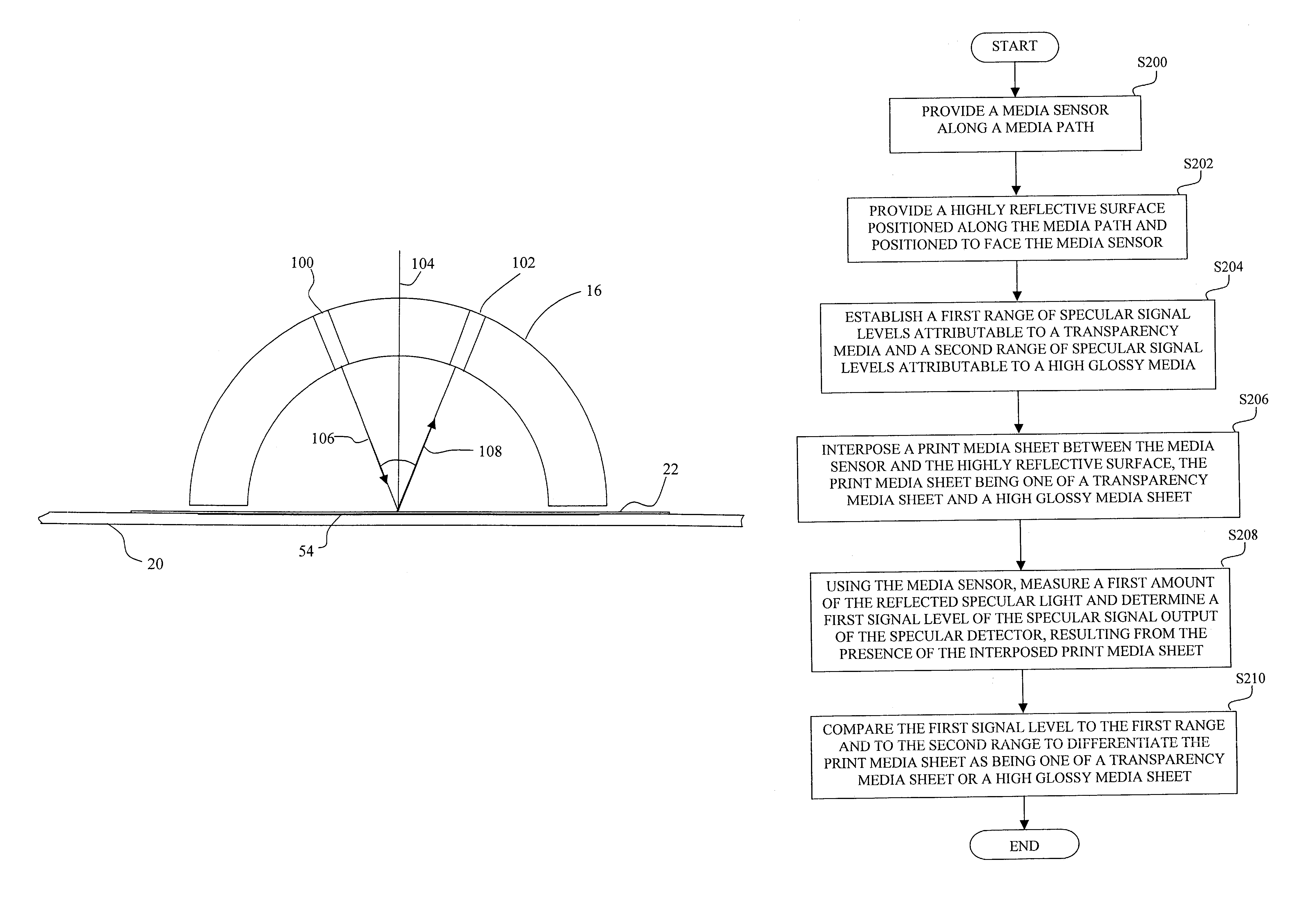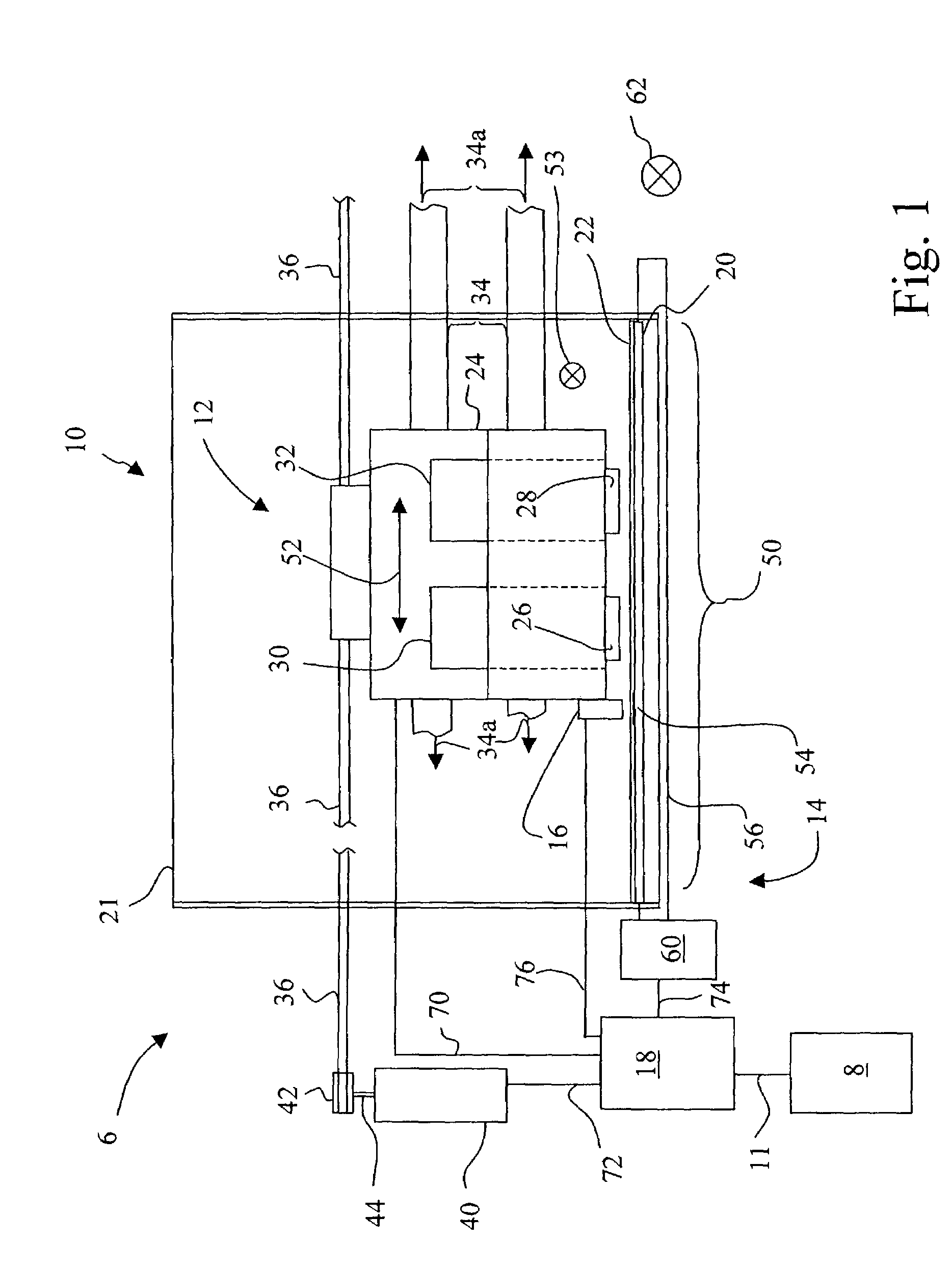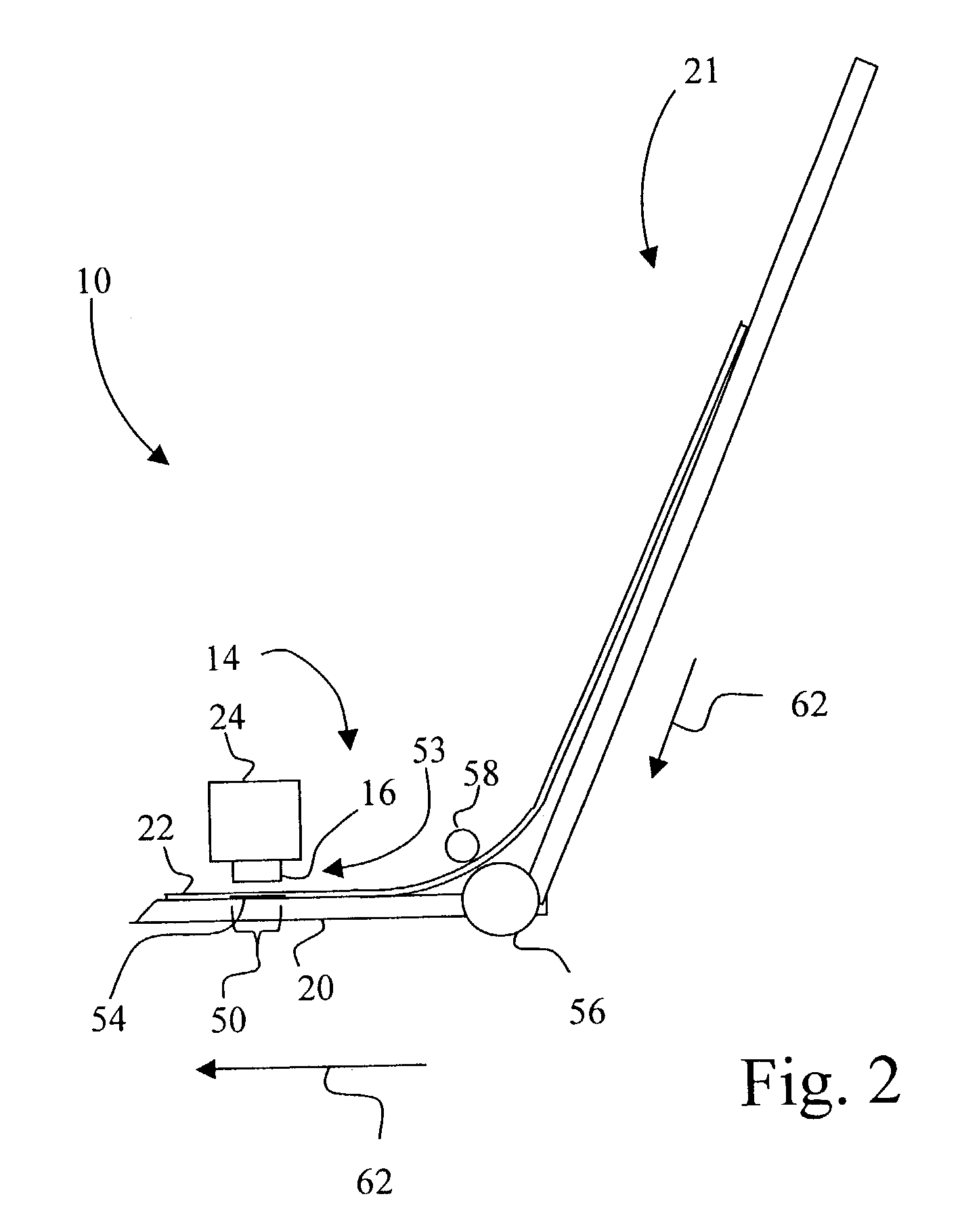Method of media type differentiation in an imaging apparatus
a technology of imaging apparatus and media type, applied in the field of print media detection, can solve the problem of difficult to distinguish between high glossy media sheets using the normalized reflectance ratio range approach, and achieve the effect of relatively easy implementation and low additional hardware cos
- Summary
- Abstract
- Description
- Claims
- Application Information
AI Technical Summary
Benefits of technology
Problems solved by technology
Method used
Image
Examples
Embodiment Construction
[0022]Referring now to the drawings, and particularly to FIGS. 1 and 2, there is shown an imaging system 6 embodying the present invention. Imaging system 6 includes a computer 8 and an imaging apparatus in the form of an ink jet printer 10. Computer 8 is communicatively coupled to ink jet printer 10 via a communications link 11. Communications link 11 may be, for example, a direct electrical or optical connection, or a network connection.
[0023]Computer 8 is typical of that known in the art, and includes a display, an input device, e.g., a keyboard, a processor, and associated memory. Resident in the memory of computer 8 is printer driver software. The printer driver software places print data and print commands in a format that can be recognized by ink jet printer 10.
[0024]Ink jet printer 10 includes a printhead carrier system 12, a feed roller unit 14, a media sensor 16, a controller 18, a mid-frame 20 and a media source 21.
[0025]Media source 21 is configured to receive a pluralit...
PUM
| Property | Measurement | Unit |
|---|---|---|
| reflectivity | aaaaa | aaaaa |
| angle of incidence | aaaaa | aaaaa |
| angle | aaaaa | aaaaa |
Abstract
Description
Claims
Application Information
 Login to View More
Login to View More - R&D
- Intellectual Property
- Life Sciences
- Materials
- Tech Scout
- Unparalleled Data Quality
- Higher Quality Content
- 60% Fewer Hallucinations
Browse by: Latest US Patents, China's latest patents, Technical Efficacy Thesaurus, Application Domain, Technology Topic, Popular Technical Reports.
© 2025 PatSnap. All rights reserved.Legal|Privacy policy|Modern Slavery Act Transparency Statement|Sitemap|About US| Contact US: help@patsnap.com



